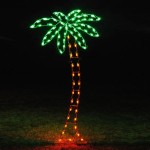Essential Aspects of Outdoor Lighting in Coastal Areas
Outdoor lighting plays a crucial role in coastal areas, providing safety, security, and ambiance to homes and public spaces. However, the unique challenges posed by the coastal environment require careful consideration when designing and installing outdoor lighting systems.
Corrosion Resistance
Exposure to salt spray and moisture can rapidly corrode metal fixtures and components. Choose fixtures made from corrosion-resistant materials such as stainless steel, aluminum, or powder-coated finishes to ensure longevity.
IP Rating
The IP (Ingress Protection) rating indicates the fixture's resistance to dust and moisture. For coastal areas, select fixtures with a minimum IP65 rating, which protects against dust and water jets.
Wind Load Resistance
Coastal areas are prone to strong winds, which can damage or dislodge outdoor fixtures. Choose fixtures with a high wind load rating to withstand these forces.
Light Color and Temperature
The color temperature of outdoor lighting can impact the surrounding environment. Amber or warm white lights (2700-3000K) are less intrusive and help preserve the natural darkness of coastal ecosystems. Avoid bright, blue-tinted lights (5000K and above), which disrupt natural biorhythms.
Light Distribution and Shielding
Proper light distribution is essential to minimize light pollution. Use fixtures with downward-facing lenses or shields to direct light where it's needed, reducing glare and light trespass into neighboring properties.
Placement and Height
Place outdoor lights carefully to maximize illumination and minimize glare. Consider the height of fixtures and the surrounding foliage to avoid obstructing views. Position lights away from potential hazards such as water features or walkways.
Security and Motion Sensors
Outdoor lighting can enhance security by deterring intruders. Consider using motion-activated lights to illuminate areas when movement is detected. These lights can also conserve energy by turning on only when needed.
Energy Efficiency
Coastal areas often experience strong sunlight, so it's important to choose energy-efficient outdoor lighting. LED fixtures are a great option, as they consume less energy while providing brighter, more consistent light output.
Professional Installation
Proper installation is essential for the longevity and safety of outdoor lighting systems in coastal areas. Hire a licensed electrician with experience in coastal installations to ensure the system meets all necessary codes and standards.
Maintenance and Inspection
Regular maintenance and inspection are crucial to keep outdoor lighting systems in optimal condition. Inspect fixtures for corrosion, damage, or loose connections. Clean fixtures regularly to remove salt and debris that can accumulate over time.
By considering these essential aspects, you can design and install an outdoor lighting system that enhances the safety, security, and ambiance of your coastal property while respecting the unique challenges of the coastal environment.

Coastal Lighting With Marine Grade Finishes Flip The Switch

How To Choose Outdoor Lighting For Coastal Environments

Outdoor Lighting Coastal Locations Wall Lights In Brass

Outdoor Lighting Coastal Locations Wall Lights In Brass

Outdoor Lighting For Coastal Locations

Coastal Areas The Worm That Turned Revitalising Your Outdoor Space

How To Choose Coastal Outdoor Lighting Fixtures Rc

Outdoor Landscape Lighting Coastal Source

How To Choose Lights For Coastal Outdoor Areas Agc Lighting

Beach House Nautical And Coastal Style Outdoor Lighting Deep Discount
Related Posts







